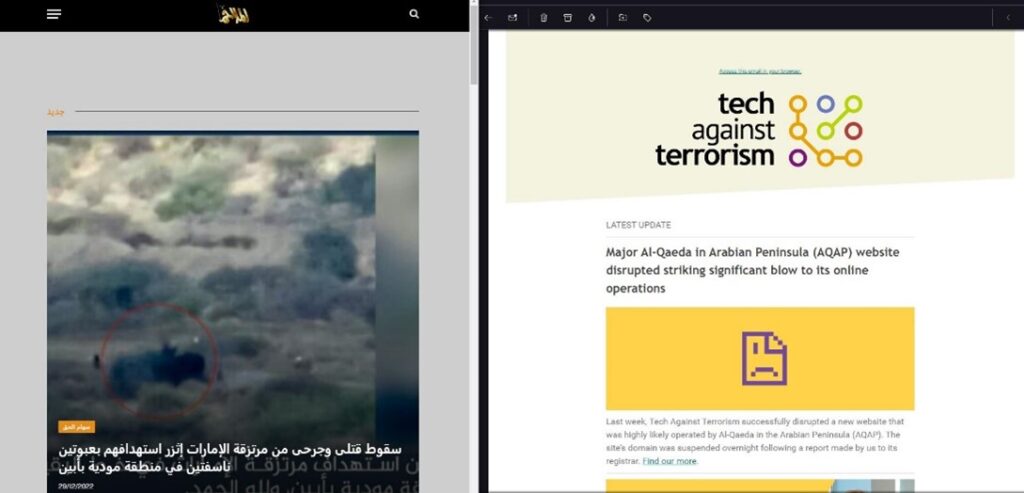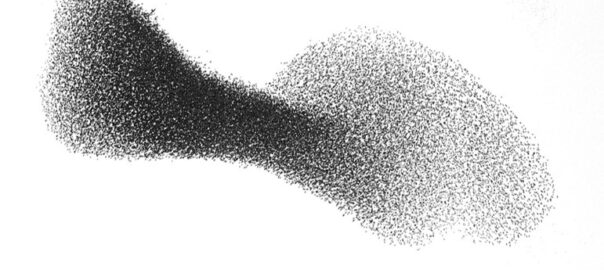The ongoing struggle against the Salafi-Jihadi movement will require reflection on multiple levels to achieve a genuinely progressive and evidence-based approach. This reflection will focus on developing an authentic understanding of:
- Their core purpose – their theology expressed in hundreds of thousands of pages of text, along with days of audio and video content.
- The strategic communication approaches which underpin their da’wa; the missionary work often referred to by Western research as recruitment or radicalization. Such understanding will include how Salafi-Jihadi groups exploit the internet for strategic communication.
You cannot whittle away theology
Theology is a constant in the Salafi-Jihadi movement. Understanding the theology important to the Salafi-Jihadi movement will continue to be pivotal to Counter Terrorism policy. Military force and security operations can blunt the operational effectiveness of the Salafi-Jihadi movement. However, the struggle against the movement is one of disrupting the specific ideas or concepts around which the movement coordinates.
This effort must be evidence-based. It cannot be confused with the numerous fads and fantasies, such as Nutella, rap music, kittens, games, brutality and gore-porn, or Ice cream in a jihadi utopia, which have for years appear as explanations in the pages of orthodox terrorism studies publications.
Starting 2023 Salafi-Jihadi groups remain strong despite Western claims that the groups have been defeated. Unfortunately, these Western claims that global jihadi groups have been defeated have repeatedly proven to be expressions of profound Western optimism rather than evidence-based analysis.
The global Salafi-Jihadi movement has demonstrated enduring resilience, expanded its operational capability, and recruited a large and more diverse generation of followers than ever before. All this despite the killing thousands of Salafi-Jihadi fighters and numerous Jihadi leaders.
To diminish the effectiveness of Salafi-Jihadi groups, Western policy must have a clear view of the theology, purpose, strategy and tactics of the movement drawing on an evidence-based analysis of what the movement communicates with its target audience.
In contrast, much of the orthodox and politically convenient view of decline and defeat of Salafi-Jihadi groups is firmly rooted in a branch of Political Science and previous research has shown, that the views within the current Transatlantic orthodoxy of terrorism studies (OTS) have frequently reflected:
- The Western-centric perspectives of their authors rather than an evidence-based analysis of how Salafi-Jihadi communicate with their target audience.
- The systemic devaluation of Arabic sources and ‘whittling away’ the very theological concepts on which the movement is based.
- The devaluation of Salafi-Jihadi theology, expressed in Arabic, is justified by researchers claiming they can ‘uncloak’ the real motivations of the Salafi-Jihdi movement by drawing on superficial pet theories such as crime, rap music, gore porn, and offers of kittens, Nutella, and eating ice cream in a so-called ‘Jihadi Utopia’.
Disrupting the Salafi-Jihadi movement must be evidence-based, focusing on:
- The theological references in the material the movement produces,
- What it is intended to mean to potential supporters,
- How it is likely to be understood by the target audience,
This means an authentic understanding of the theology important to the Salafi-Jihadi movement must be central to Counter Terrorism policy. Military force can blunt the operational effectiveness of the Salafi-Jihadi movement, destroying the weapons and infrastructure on which they rely. However, military force cannot disrupt the ideas and concepts around which the movement coordinates.
The emergence of Swarmcast 2.0 demands strategic approach to disruption
2022 witnessed the emergence of Swarmcast2.0 through which the Media Mujahidin – the media operatives who work on and offline in support of Salafi-Jihadi groups – attempted to influence their Arabic speaking, primary target audience.
Now the Web3-enabled Swarmcast2.0 is much more dynamic, secure, encrypted, decentralised, and resilient than the original version which emerged by 2014. It circumvents or renders obsolete many of the current tactics intended to disrupt the online activity of the Media Mujahidin. As a result of these developments, there is an increasingly pressing need for strategic level approaches to disruption, and collaborative strategies. These can no longer be held back by the comfort and reassuring rhetoric of the OTS ‘success narrative’.
The speed, agility and resilience of Salafi-Jihadi networks coupled with the willingness to embrace emergent behaviours and web3 technology has enabled the Media Mujahidin have achieved a persistent presence despite the ongoing efforts to disrupt their communication.
The existing evidence-base demonstrates the Media Mujahidin continues to expand their reach by adopting a multiplatform communication paradigm, including many platforms with large user-bases. As social media users on average use 7 platforms each month, adopting a multiplatform strategy provides the Salafi-Jihadi movement with multiple entry points to reach their target audience.
This contrasts significantly with the dominant narrative, presented by both the transatlantic orthodoxy of Terrorism Studies and the trade associations backed by big social media platforms. That ‘success’ narrative claims that “Broad improvements in online moderation of terrorist content on mainstream social media has pushed terrorists and violent extremists onto smaller, more niche online spaces, and many terrorist actors have grown more reliant on website infrastructure.” As Tech Against Terrorism director Adam Hadley said, “smaller platforms and social media services are where extremists moved to after being shut down by giants like Facebook and Twitter”.
Amongst the transatlantic orthodoxy this has become the dominant narrative, however, there are two interconnected problems with this ‘success narrative’.
- First, previous research has shown the ability to deny Salafi-Jihadi groups access to platforms run by tech giants such as Facebook and Twitter, has been frequently overstated.
- Despite the significant resource and effort expended by larger platforms, Salafi-Jihadi networks and content are easily identifiable on all four of the biggest social media platforms, i.e., Facebook, Instagram, YouTube and WhatsApp.
- This does not mean they have had no success, in fact major social media companies have removed a huge amount of material. It merely means that having had some success is a very long way from the claim of driving the Salafi-Jihadi groups off major platforms.
- Second, the landscape occupied by the tech giants of 2014 is not the same as it is today
- For example, Twitter has strong name recognition amongst policymakers and OTS researchers. However, due to the changes in the tech landscape, some of the so-called ‘smaller’ or ‘niche’ platforms used by the Salafi-Jihadi movement now have significantly bigger userbases than Twitter. For example,
- Telegram, a mainstay of the Jihadi ecosystem has at least 100 million more users than Twitter, some estimates suggest Telegram may have almost twice as many users. As part of Swarmcast2.0 the Salafi-Jihadi movement continues to exploit Telegram, through a large interconnected ecosystem of Salafi and Salafi-Jihadi channels.
- WhatsApp is used by groups including AQ, IS, Taliban and Hamas along with 2 billion registered users. Links to groups on WhatsApp are often shared via networks including the core of the movement on Telegram.
- Evidence that the world’s favourite social platform, with 2 billion users, is being exploited by IS, AQ, and the Taliban should undermine confidence in the claims commonly accepted in OTS and some parts of the CVE industry that Salafi-Jihadi groups have been pushed from so called tech giants onto smaller platforms.
- For example, Twitter has strong name recognition amongst policymakers and OTS researchers. However, due to the changes in the tech landscape, some of the so-called ‘smaller’ or ‘niche’ platforms used by the Salafi-Jihadi movement now have significantly bigger userbases than Twitter. For example,
The success narrative is often supported by announcements major operations against Salafi-Jihadi groups and commentary from ‘embedded academics’. Claims a EUROPOL led effort had “resolutely trashed the Islamic State’s presence on Telegram” and that Islamic State was “not present on the internet any more” did not stand up to scrutiny even in the short term and long term the movement has maintained a persistent presence on the platform.
Similarly, at the end of 2022, Tech against Terrorism announced it had been responsible for “Striking a significant blow” against the AQAP media arm al-Malahem, by removing its website. Unfortunately, the website was already back online by the time Tech against Terrorism sent out the email announcing this significant blow.

Making the site briefly unavailable is not the only purpose for removal. As Tech against Terrorism put it in their mail out “[They] acknowledge that this site will likely reappear elsewhere, but in our view actions such as this are worthwhile; they disrupt the ability for terrorist actors to spread their material on the public internet, and they break outlinks to terrorist content on the site that had been shared elsewhere online.”
The new link was widely distributed across web and social platforms before the email announcement of removal of the earlier site even arrived. This means that backlinks are broken when the original site was removed. However, these are often old backlinks buried deep in social feeds, while the new site URL featured prominently on multiple platforms for new and existing users to access.
Ultimately, as argued previously, like almost everything about the way we use technology and access the web in 2022, it is not like it used to be. That change in behaviour, however, is not necessarily the result of Western ‘success’ against Salafi-Jihadi groups, nor in fact has it become harder for the Media Mujahidin to operate in any strategically meaningful sense.
Only when disruption efforts focus on a genuinely strategic level, that targets the multiplatform nature of Swarmcast 2.0, can there be a reasonable expectation that the action taken to inhibit the exploitation of the internet by extremist groups will have a meaningful impact on their activity. This will include:
- A Web3 strategy – The Salafi-Jihadi movement already has adopted Web3, but disruption efforts lag far behind.
- Weeks of action – The Salafi-Jihadi movement are more than prepared for ‘days of action’, wearing them down take weeks of sustained action forcing them to burn through manifold social media accounts, domains, phone numbers and email addresses.
- A paradigm shift to sustained multiplatform action – The Salafi-Jihadi movement are more than prepared for action against their presence on a single platform. Their Multiplatform Communication Paradigm provides resilience against efforts on any individual platform, as Salafi-Jihadi supporters like average social media users, have accounts on multiple platforms. Losing accounts on one platform only requires reconnecting via links shared on a second or third platform.
If Terrorism Studies and policy makers continue to buy into the ‘success narrative’, rather than grasp the increasing complex constant evolution of the Swarmcast2.0 there is an increasing risk that disruption efforts will be using Web 2.0 approaches in a Web3 world.
The risk posed by the success narrative and relying on Web 2.0 disruption approaches in an increasingly Web3 world, approaches the equivalence, to lean on Darcy DiNucci’s analogy, of planning to play Pong but finding yourself in The Matrix.
Ideas above are a condensed version of the following:
- The Salafi-Jihadi online ecosystem in 2022 – Swarmcast 2.0: https://eictp.eu/en/the-salafi-jihadi-online-ecosystem-2022-swarmcast-2-0/
- Mapping the Jihadist Information Ecosystem Towards the Next Generation of Disruption Capability: https://static.rusi.org/20190716_grntt_paper_06.pdf

